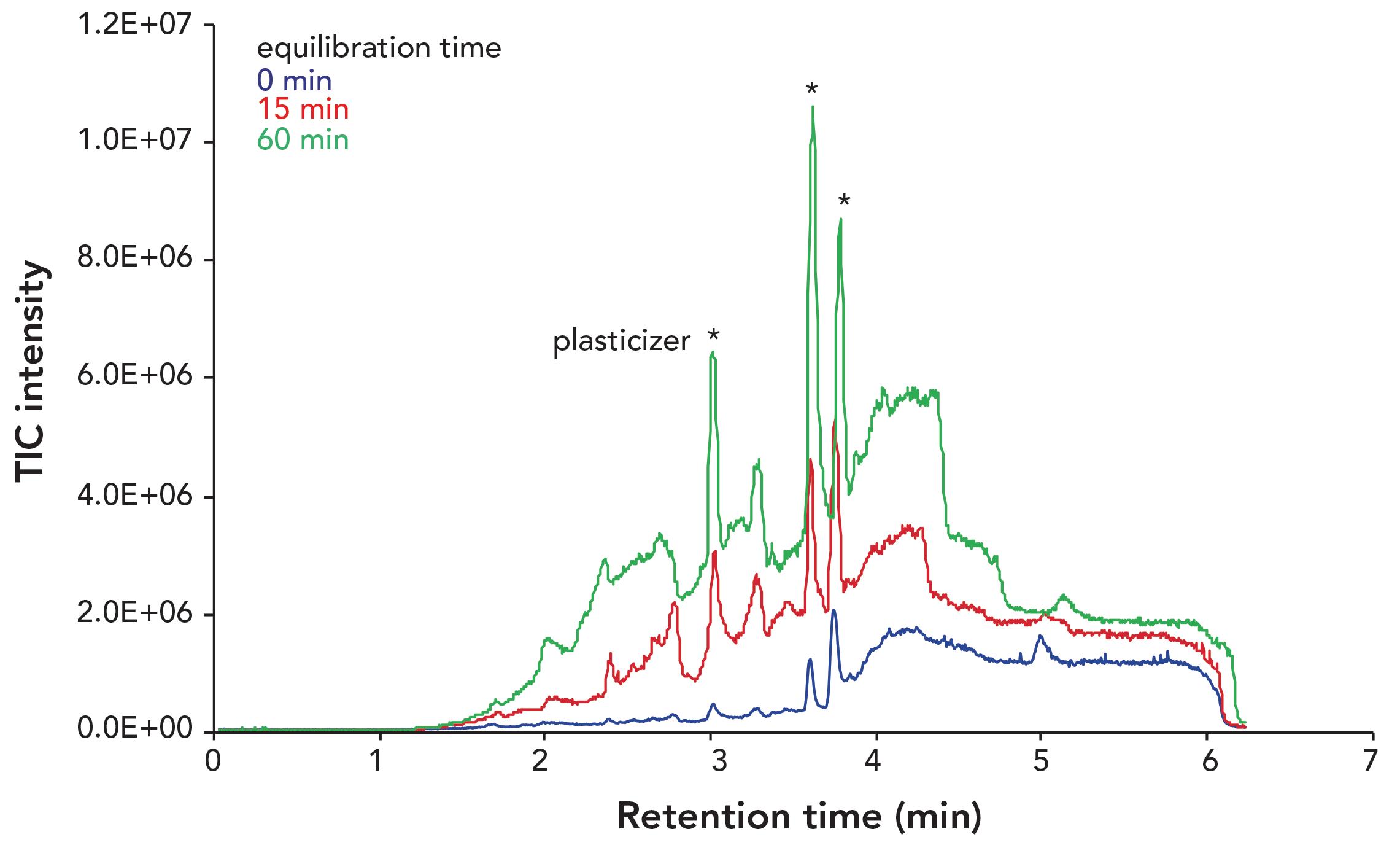Simple Tips to Increase Sensitivity in U/HPLC Analysis
Five Tips & Tricks
A main goal of any U/HPLC analysis is to achieve the optimum sensitivity with the given instrumentation. Here are a few simple measures that can be easily implemented.
1. Mobile-phase considerations
Choose the right solvent grade. Solvents that are not “clean enough” will give high background signal. Several solvent grades are available for HPLC, for example “HPLC grade,” “LC–MS grade” or “UHPLC–MS grade”. Choose the solvent grade that matches your method requirements. Examining the specification sheet or Certificate of Analysis helps to decide which one is best suited. These should state whether, for example, an LC–MS-grade solvent has been tested for LC–MS suitability.
To avoid ion suppression in LC–MS, only highly pure volatile mobile-phase buffers and additives such as ammonium formate, acetate or triethylamine should be utilized, and at moderate concentrations. Make sure these reagents are MS grade quality. Also, since polyethylene glycol (PEG) is a common contaminant detected in LC-MS, find a solvent that has a specification for PEG, such as the LiChrosolv® UHPLC-MS grade solvents, for which levels of PEG are monitored in every batch produced.
When using a UV detector at wavelengths lower than 210 nm, select acetonitrile instead of methanol, since acetonitrile has a lower UV cutoff (190 nm).
2. Equilibration time considerations
In reversed-phase methods, avoid running long equilibration times under highly aqueous conditions, because this leads to contaminant buildup in the column head. In gradient runs, these contaminants elute at specific retention times and compromise sensitivity or even generate ghost peaks. Figure 1 shows that both baseline noise and contaminant peak intensities increase with extended equilibration time.
In reversed phase, it is a good practice to periodically flush the column with 10 column volumes of 100% organic solvent, such as acetonitrile, to remove any contaminants that have built up.
FIGURE 1: Total ion chromatogram showing the effect of varying the equilibration times prior to a gradient run (for details see inset; asterisks indicate peaks derived from plasticizers).

3. HPLC column considerations
Go small on the column i.d.. As column i.d. decreases (while geometrically scaling injection volume and flow rate accordingly), signal-to-noise ratio increases, which improves sensitivity.
Go small on particle size. If the LC system’s pressure limits allow, use smaller particle columns. Smaller particles give better separation efficiency.
Go with fused-core or superficially porous particles (SPP). SPPs provide high resolution and efficiency without the need to handle high backpressures.
Go with monolithic columns. These provide high matrix tolerance and enable rapid separations at low backpressure.
4. Instrument consideration: Avoid dead volumes
A proper setup of the HPLC system itself can contribute to increased sensitivity. It is important to minimize the dead volume, for example, the volume of all system parts from the injector to the detector cell but without the HPLC column volume. Large dead volumes can cause peak broadening, tailing, or splitting, leading to poor resolution and decreased performance—and hence lower sensitivity and the failure to detect low abundant analytes. Consequently, all system parts (tubing, connectors, fittings, and so on) must contribute to minimizing dead volumes.
5. Sample considerations: Clean up
When working with difficult matrices, using solid phase extraction (SPE) helps to remove major contaminant groups such as proteins and salts. Take advantage of selective sorbents for specific matrices such as zirconia-based hybridSPE® for removal of phospholipids and proteins in plasma or serum.

Influence of Concentration in Conventional GPC/SEC and Advanced Detection GPC/SEC
March 21st 2025Sample concentration is a parameter that can influence the quality of gel permeation chromatography/size-exclusion chromatography (GPC/SEC) separations and the obtained results. Understanding this influence can help to support the development of reliable GPC/SEC methods.
